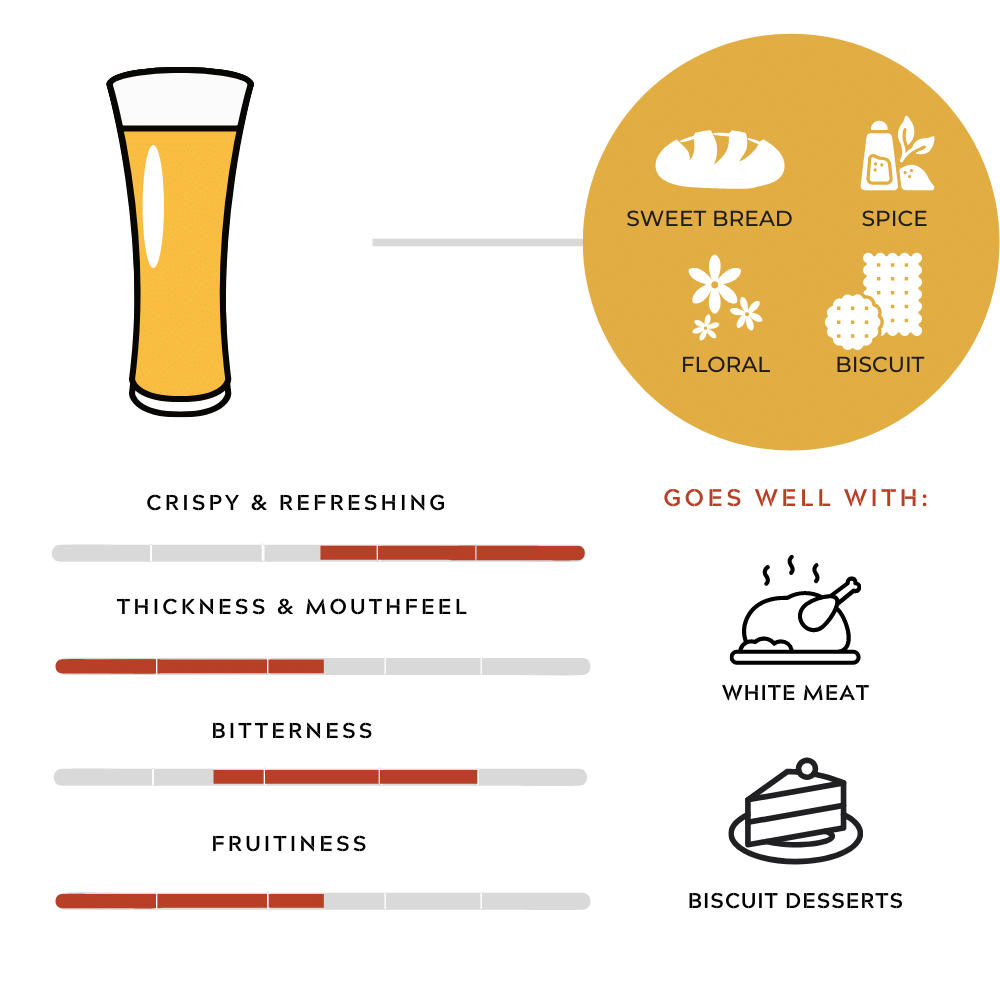Pilsners are by far one of the most popular styles of beer produced, sold, and consumed today that are known for their exceptionally well-balanced flavours and highly sessionable character.
Having only emerged in the Czech Republic during the mid 19th century, the style quickly spread to neighbouring Germany, where they are made with a slightly different set of ingredients, in particular German hops.
Now produced all over the world with subtle differences, the style is renowned for having a typically light to medium body, moderate to high amount of carbonation, moderate malt profile, and variable hop profile, from low to moderately high.
When looking to begin exploring the pilsner category, the two sub-styles most important to consider are the German Pilsner and the Czech or Bohemian Pilsner.
To learn more about what makes the style so special, read this quick guide.
Being straw to very pale yellow in colour, the German pilsner is a light to medium bodied brew that has a delicately sweet malt character that is balanced out by a moderate to high amount of hoppy bitterness.
Overall, the beer finishes dry, crisp, and quite bitter, with a moderate amount of herbal flavour from the use of German hops.
These beers are typically moderate to intense in their levels of carbonation and when compared to Czech or Bohemian pilsners, they are noticeably lighter in colour and slightly more bitter in taste, which lingers for a short period.
When looking to pair food with German pilsners, the incredibly crisp, refreshing, and clean drinking profile of these beers means they pair exceptionally well with light salads, white meat dishes such as poultry or fish, and finally, mildly sweet desserts with a biscuit base.
Although quite similar to their German counterparts, Czech or Bohemian pilsners are often slightly darker in colour and the hop profile benefits from the use of Saaz hops, which imparts a distinct spicy and floral aroma and flavour.
For a general guide, expect these beers to have a moderate amount of carbonation, light to medium body, moderately strong malt profile that has noticeable flavours of sweet bread and biscuits, and finally moderate amounts of both hoppy bitterness and flavour.
When pairing food with Czech or Bohemian pilsners they can typically be matched with very similar food items as German pilsners, including light salads, white meat dishes such as poultry or fish, and mildly sweet desserts with a biscuit base.
If you’ve been following beer trends recently you would know that Hazy IPAs are all the new craze. Here, we explore what they are & how they taste & pair with food.
Interested in exploring craft beer but not sure where to begin? In this guide, we examine some of the best styles to start with for those looking for some quick guidance.
Beer cocktails? Far from being a far-flung notion, using beer to create exquisite cocktails is strongly advocated for by bartenders the world over. Here, we explore some of the best.


